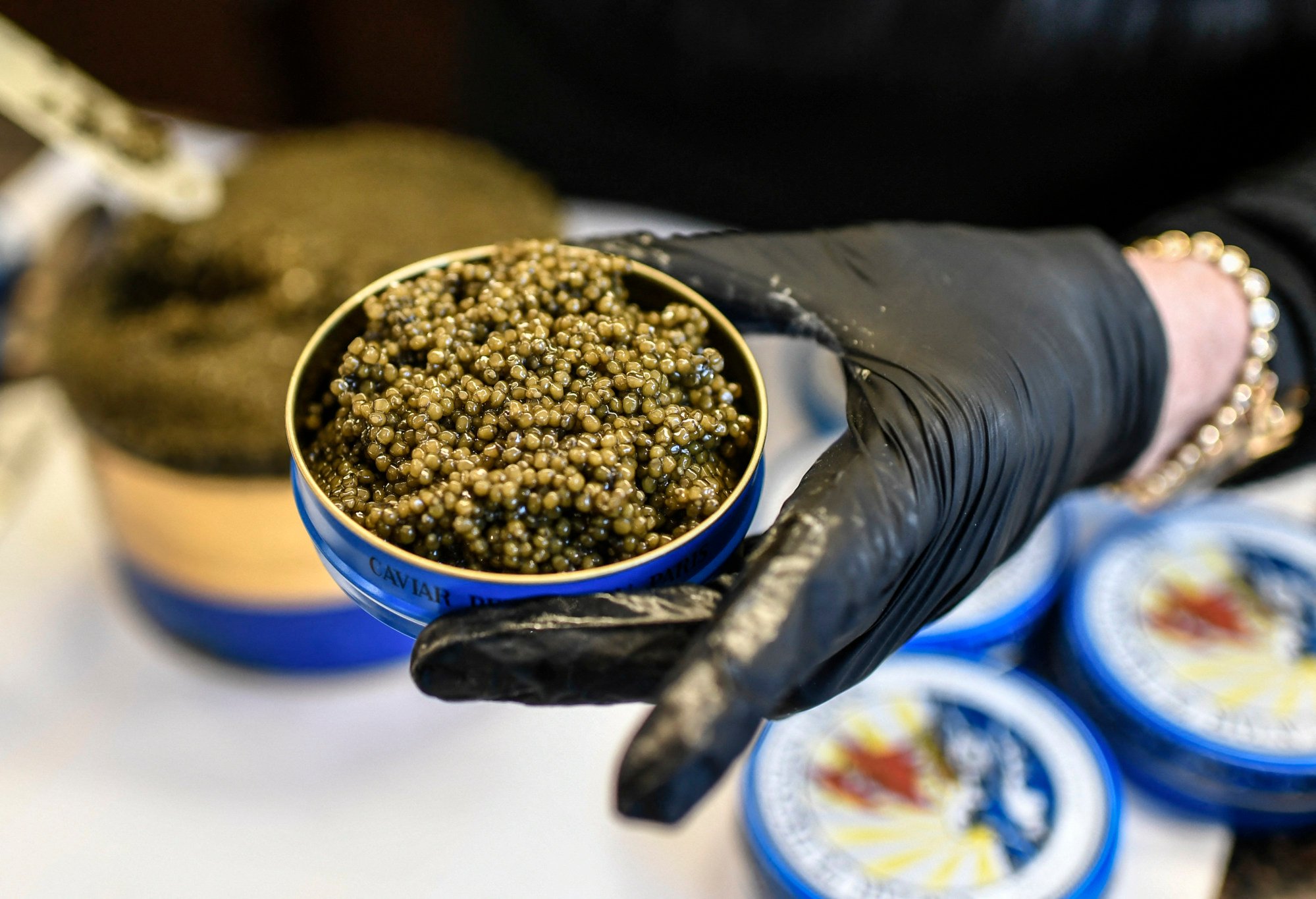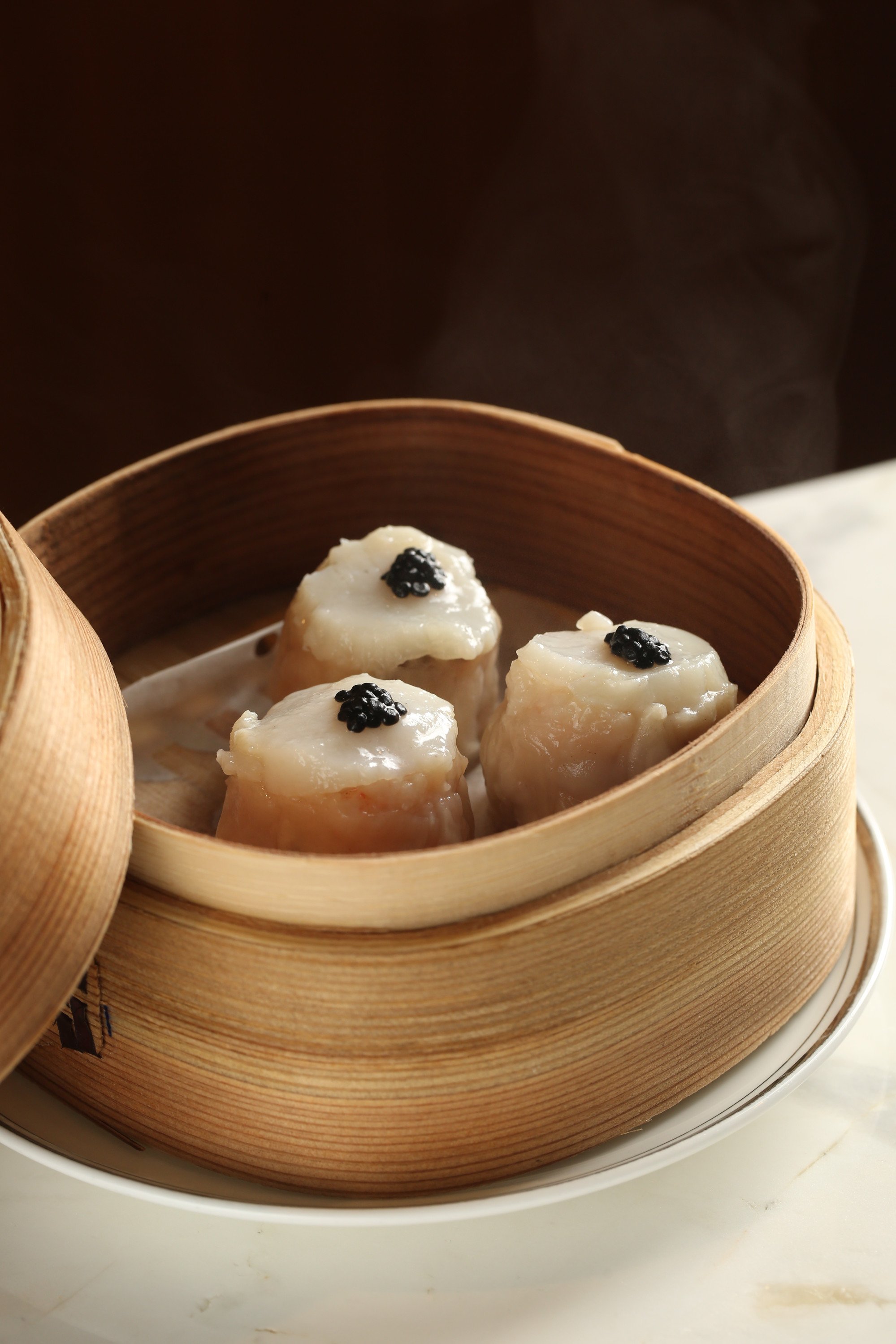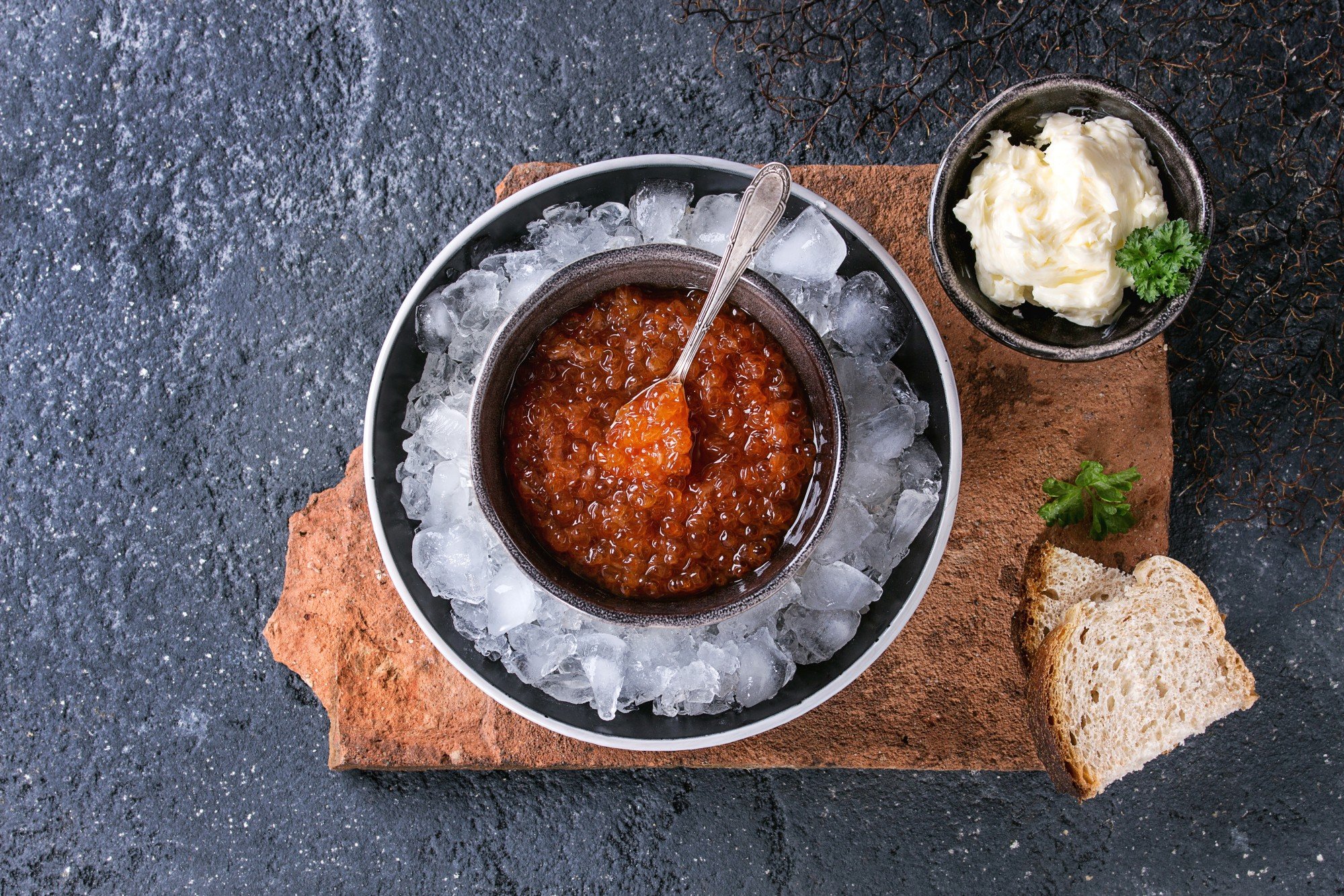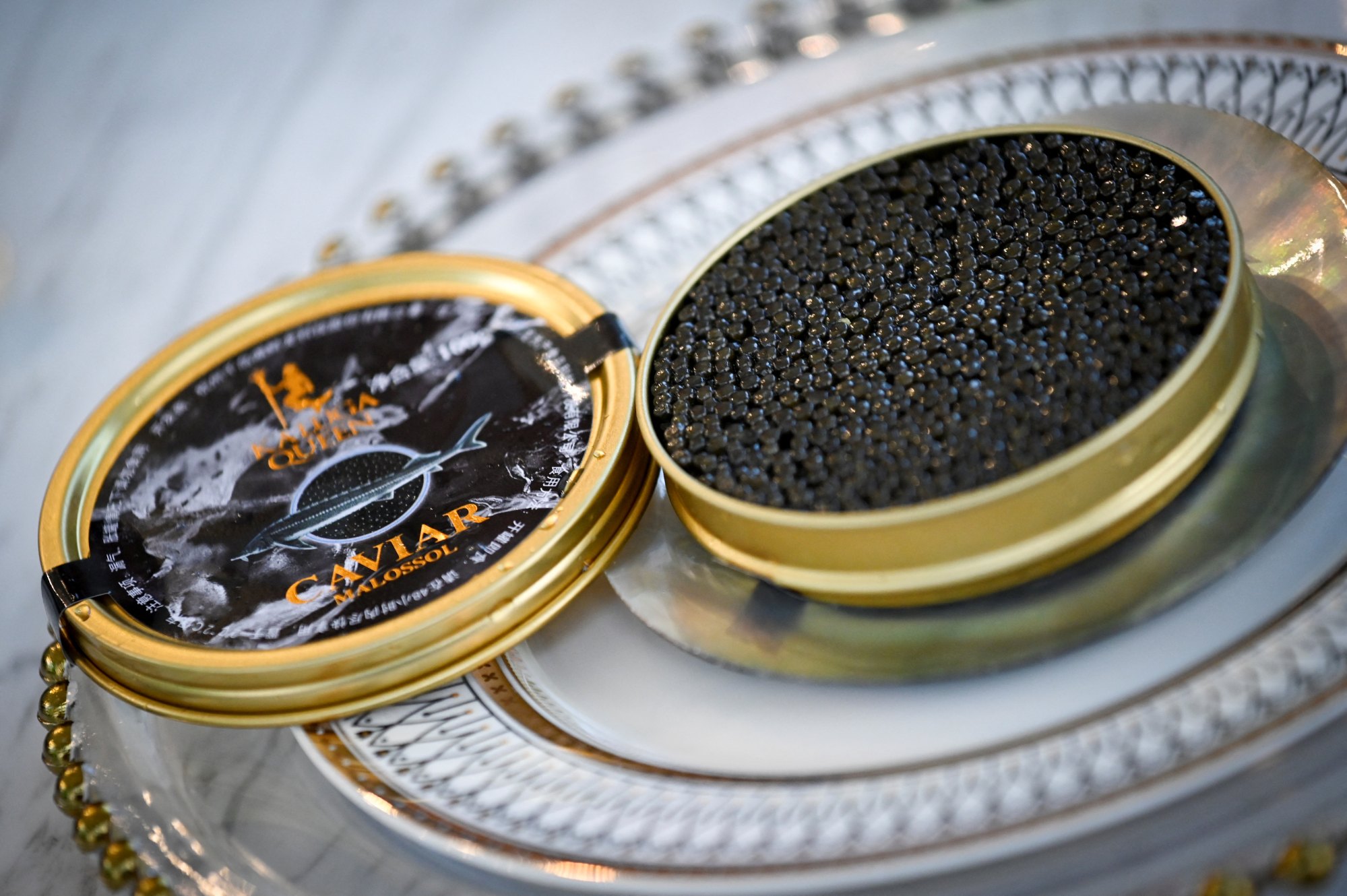
Caviar is on everything in Hong Kong, from dim sum to ice cream – but why is expensive ‘black gold’ so popular?
- A boom in the production of caviar over the past decade has seen its popularity skyrocket, making it now ‘more fashionable than elitist’
- The pandemic caused a brief dip in sales of the luxury fish eggs, but now ‘black gold’ is piled atop everything, and has found fame on social media
We just can’t seem to get away from caviar.
It doesn’t matter whether it’s being served with vintage Krug or piggybacking pricey tuna belly sushi, the unbridled abundance of “black gold” piled high represents a level of affluence that is still out of reach for the average diner.
As much as food bloggers these days enjoy waxing lyrical about humble ingredients such as tofu, yams and rice; heaping spoonfuls of caviar on everything and anything still seems to be the last word in status symbols – the ultimate IDGAF.

I’ve seen it decorating slices of ruby red steak, topping tacos al pastor and, more recently, har gow shrimp dumplings.

Others have joked about caviar being “high-end MSG”, which is a more delightful way to reframe it. But we’re not seeing it being used sparingly.
How Chinese caviar conquered the world with help of Lufthansa
China, not Russia, now leads the way in caviar, according to a 2021 study by the European Market Observatory for Fisheries and Aquaculture Products, accounting for up to 84 per cent of global sturgeon production.
This has led to notable trends.

According to a bemused editorial in The New York Times in June, caviar “bumps” – a hedonistic way of indulging in mounds of caviar off the back of your hand – are all the rage among millennial diners. It is post-Prohibition-style revenge dining at its finest.
Brands such as Nomad Caviar, founded in 2020 – at the beginning of the pandemic – by hospitality veteran Jason Cohen, have been trying to change the perception of the fish eggs from an occasional luxury to an everyday indulgence.
He points out that the economics of caviar have changed drastically in the past decade, with the price point coming down significantly, allowing him to bring caviar to the masses.
Caviar now is becoming more fashionable than elitist. It’s becoming a bit more street.
For a time in 2020, as diners shifted from dining out to entertaining in, Cohen’s relatively affordable supersized tins of caviar became the hottest table topper among Hong Kong gourmands. A whopping 85 per cent of Cohen’s business is direct to consumer.
“Caviar is still a status symbol, but in a different way,” he says. “I had it the other day with crumpets and butter, which is one of my favourite ways of eating caviar.”
It’s a far cry from when he was growing up, when a tiny helping of “about 10 eggs” given to him on a blini by his mother was the most extravagant thing he had as a child.
“It was like an elitist thing. You had to make US$1 million a year – you had to have a Rolls-Royce, you had to have a boat – to eat caviar,” he says. He likens the trend for caviar to the way even major fashion houses are morphing into something more edgy.
“Caviar now is becoming more fashionable than elitist. It’s becoming a bit more street.”

Fried chicken and caviar will not be one of them, but don’t be surprised to see it piled on smiley face potatoes or boiled eggs infused with whisky or vodka.
He has previously experimented with distilling caviar into vodka, or using it in the process of fat washing spirits – flavouring spirits with a liquid fat like butter or bacon oil.
“When I tried caviar for the first time, what actually interested me the most was not really the flavour, but the texture,” he says. “When it comes to drinks, it’s about the whole experience – it’s about the scent as well as the mouthfeel.
“When we serve cocktails, we want to be creative and push the boundaries as well. But at the same time, it’s important to us to not alienate anybody,” he says. “I like to do things that are weird, but also they need to be accessible.”

He points out how the perception of caviar as an everyday item may come full circle from the pre-revolutionary days of the Russian tsars, who would serve it to their children for breakfast alongside mashed bananas.
“Caviar just didn’t have value at that time,” he says. “But reading that made me think of maybe creating a banana daiquiri with a side of caviar.”
While I remain unconvinced, there’s plenty of caviar to go around: one high-end hotel has just announced a caviar summer staycation package and another has rebranded its Italian restaurant as a champagne and caviar bar.
Perhaps somewhere in the multiverse is another me that is delighted by this news, fist bumping everyone and devouring mountains of caviar with reckless abandon.

